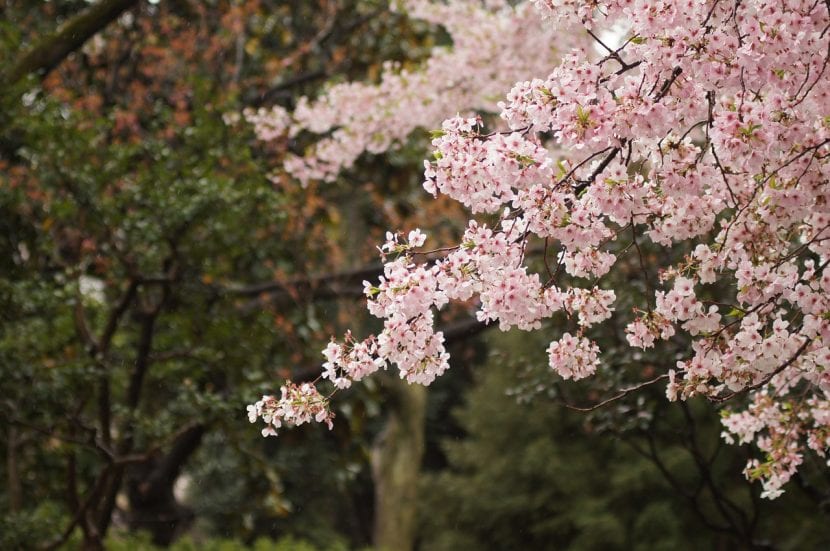
In Japan they have incredible plants that have been able to adapt in an environment where earthquakes are very frequent. Anchoring their roots strongly to the earth, they have adopted forms that, although they might resemble those of the rest of the vegetal beings that inhabit the Earth, are slightly different. And there are many Prunus, but none have the beauty of the P. serrulata.
Better known as Japanese cherry trees, these trees create quite a spectacle during spring. After having spent an intense cold, with temperatures that can drop to -15ºC, its delicate and precious flowers open, beginning spring. The joy that is felt is so much that the Japanese do not hesitate to celebrate it. This is how they celebrate the arrival of cherry blossoms.
Hanami, the cherry blossom festival
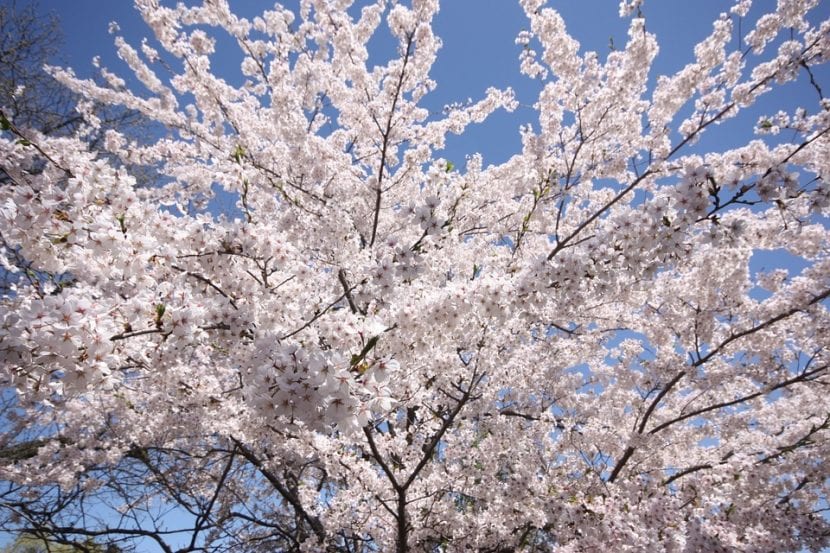
The Japanese are very proud of their cherry trees, so much so that They have been celebrating Hanami for centuries, a word that translated into Spanish means "to see flowers", but which is used more to refer to the period in which these trees bloom and residents, as well as tourists, go to parks and gardens to contemplate them.
This festival is celebrated from the end of March to the end of April, which is when the »sakura» (cherry tree in Japanese) have their flowers fully open. The first to bloom are those that grow on the islands of Okinawa in early March, and the last are those on the island of Hokkaido the last week of April.
It is celebrated so much and with such pleasure that in Japan the forecast of flowering or sakurazensen is given, which is announced by the meteorology office. In this way, it is possible to know at all times in which areas or places of the country are flourishing, and which will be the next to flourish.
Thus, families and friends do not hesitate to gather under the shade of the cherry trees where they have picnics or simply enjoy the scenery, both day and night.
What is the philosophy of Hanami?

Hanami is closely related to the samurai code in Japan. The samurais were men who aspired to die at their peak, that is, in battle, instead of getting old and "withering" little by little like the rest of the mortals.
Thus, the cherry blossom became the emblem of these men, as the flowers get really pretty and never seem to get old. In fact, they often fall to the ground before withering, just as man wanted to die in battle and not naturally over the years.
There is a legend that at first there were only white flowers, but when a samurai or a member of his family committed suicide to avoid disgrace, he did so in front of a cherry tree. For this reason, it is said, the flowers began to turn pink due to the blood absorbed by the roots.
Obviously, the color of the flowers has nothing to do with blood, but rather with the genetics of each plant. But we already know that all legends have parts that correspond to reality, and other parts that are more typical of the imagination 🙂.
Where is it celebrated?
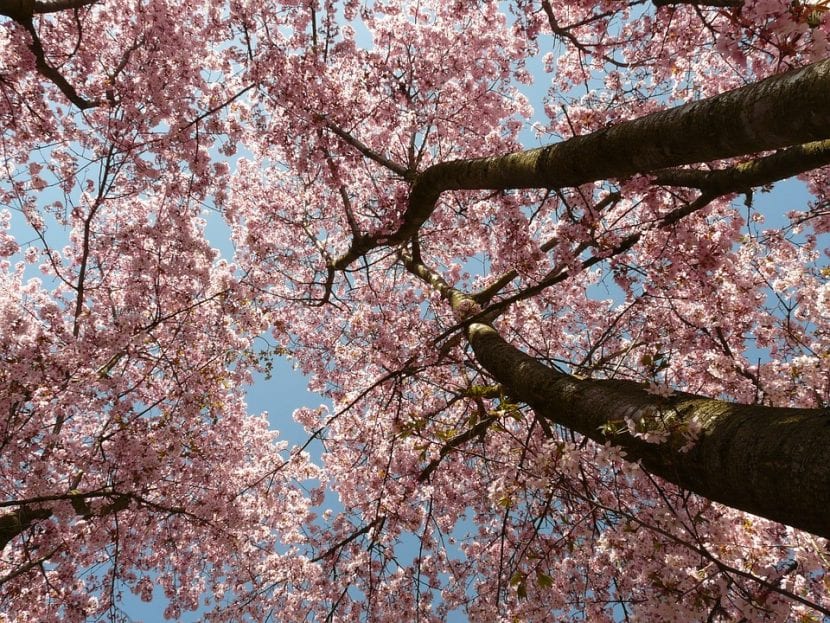
If you want to go see the cherry blossoms, these places are very popular:
- Tokyo: Ueno and Chidorigafuchi Park
- Fukui: Asuwa River
- Kyoto: Maruyama Park, Heian Shrine, Arashiyama and Kamogawa
- Osaka: Osaka Castle
- Nara: Nara Park
- Yoshino: Mount Yoshino
- Himejic: Himeji Castle
- Tsuyama: Tsuyama Castle
What are Japanese cherry trees like?
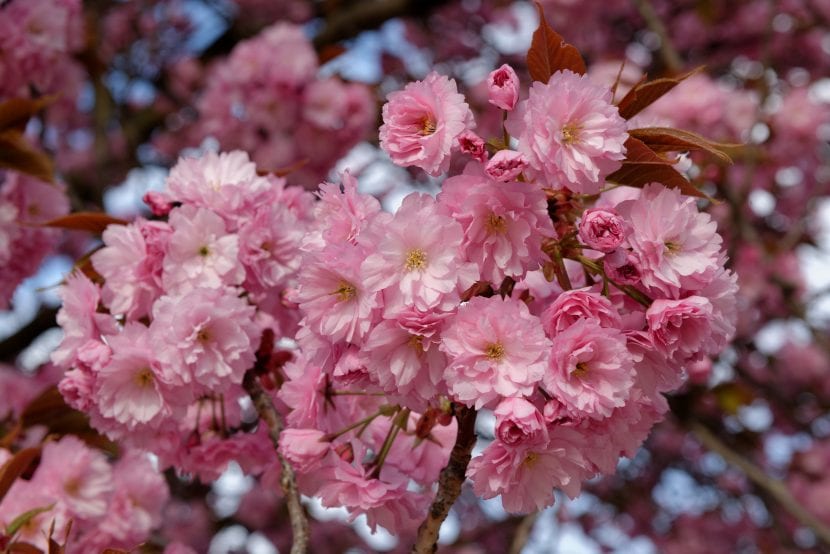
Japanese cherry trees, whose scientific name is Prunus serrulata, are the main protagonists of Hanami. But what are its characteristics? As well. Is about tree plants native to Japan, Korea, and China They are known by the names of Japanese cherry trees, East Asian cherry trees, Oriental cherry trees, and flowering cherry trees.
They are deciduous trees that lose their leaves in autumn and reach a height of 7-8 meters, with a single trunk and a wide crown of up to 5m. The leaves are alternate, ovate-lanceolate in shape and about 13cm long by 6,5cm wide, with a short petiole and serrated edge. During spring and summer they are green, but in autumn they turn yellow, red or crimson.
The flowers appear in clusters of 2 to 5 at the same time that the leaves appear. They are composed of five petals that can be white, soft pink or deep pink. Once pollinated, a black globose drupe is formed measuring 8 to 10mm in diameter.
How are they cared for?
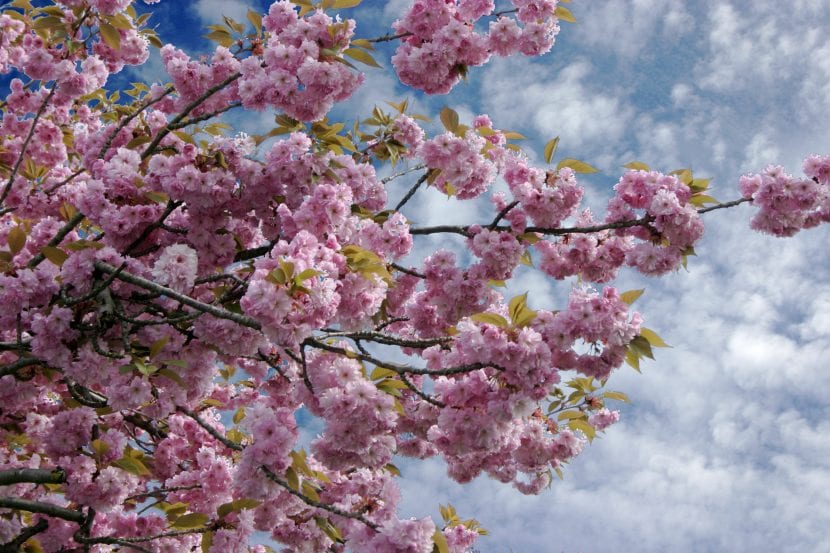
These trees are beautiful, right? If you want to have one or more in your garden and celebrate your own hanami, here is its care guide:
- Location: outdoors, in full sun or in semi-shade.
- Land: grows best in those that are slightly acidic (pH 6 or 6.5), but can adapt to other neutral types. In any case, it is important that it has good drainage.
- Irrigation: three or four times a week in summer, and one-two a week the rest of the year.
- Subscriber: From spring to summer it should be paid with organic fertilizers, such as worm humus, adding a layer 3cm thick once a month.
If it is grown in calcareous soils, it is highly recommended to fertilize it from time to time with fertilizers for acidic plants so that it does not lack iron or magnesium. - Planting time: in spring.
- Multiplication:
- Seeds, which must be stratified in the refrigerator for three months. You have to fill a tupperware with vermiculite, place them, and cover them with more vermiculite. Then it is watered and they are introduced into the refrigerator.
Once a week it is advisable to open the container so that the air is renewed and thus avoid the appearance of fungi. - Cuttings: in autumn or late winter, woody branches of about 40cm in length have to be cut, a ring of bark removed from one end, impregnated with rooting hormones and finally planted in a pot with a very porous substrate (such as akadama) in semi-shade .
If all goes well, they will root in 2-3 months, but it is complicated.
- Seeds, which must be stratified in the refrigerator for three months. You have to fill a tupperware with vermiculite, place them, and cover them with more vermiculite. Then it is watered and they are introduced into the refrigerator.
- Rusticity: it supports up to -15ºC, but for the color of its leaves to change it is necessary that the temperature in autumn drops below 20ºC.
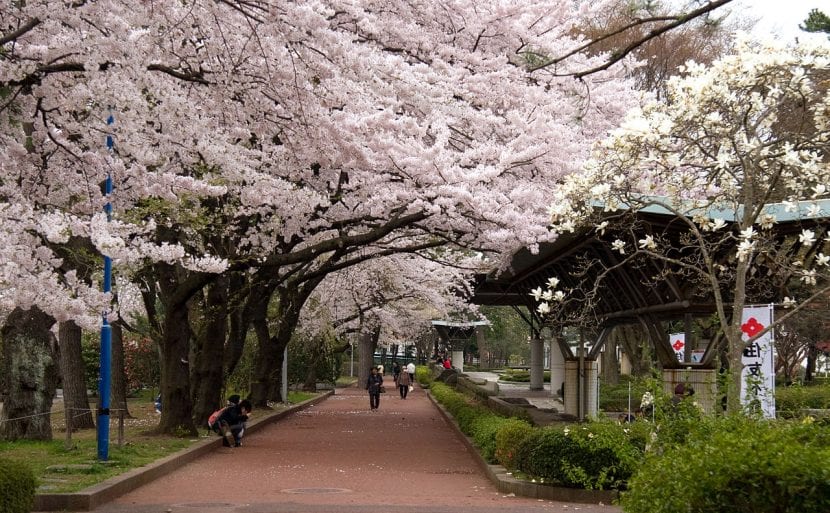
Tsutsujigaoka Park in Japan
The Jerte valley, the cherry trees are also beautiful in Spain
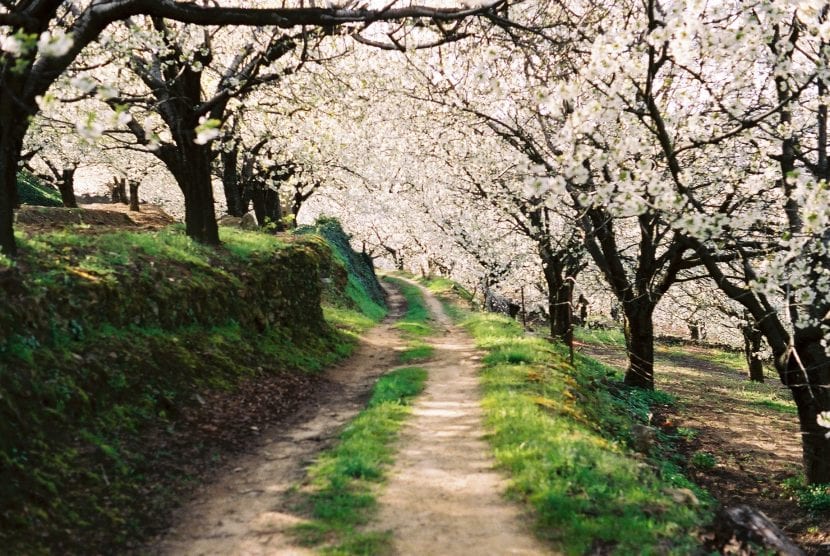
In Japan these trees create quite a spectacle, but the eastern country is not the only place where they can be seen. In Spain, specifically in the Jerte Valley (Extremadura), During the second half of March the festival of El Cerezo en Flor is celebrated, which has been declared of National Tourist Interest. A total of a million and a half trees bloom, staining the landscape in white, first those in the warmest area, and then those in the coldest.
The Jerte Valley Tourist Office reports daily on the flowering of these trees. Some plants that you will be able to see when traveling the mountains and the towns that make up the Valley. And if you also want to take advantage of hiking, the region has 21 approved and signposted routes that you can see here.
What did you think of the cherry trees?